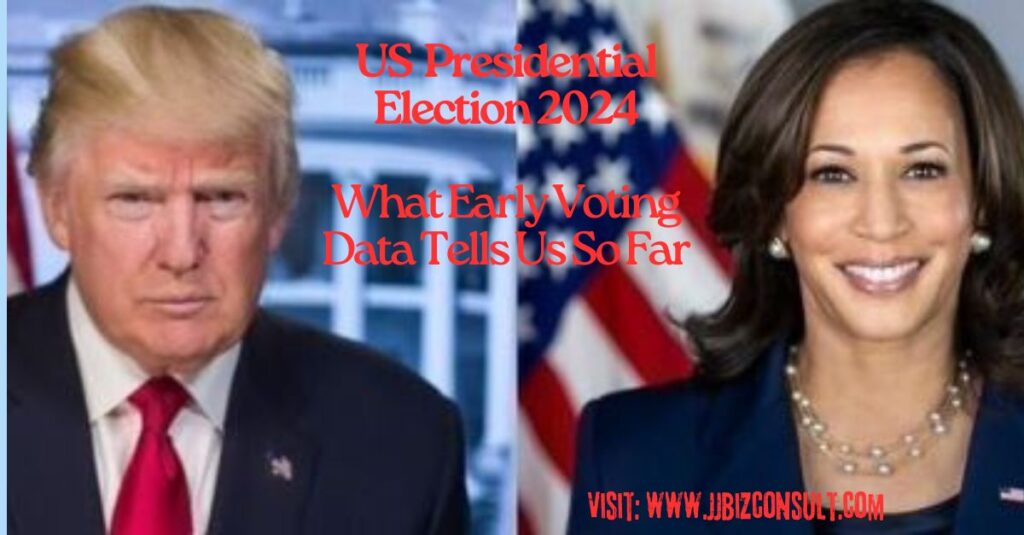
US Election 2024: What Early Voting Data Tells Us So Far
As the 2024 general election approaches, early voting has already begun to shape the electoral landscape. As of now, 14,213,656 advance ballots have been returned nationwide, reflecting a significant engagement from voters ahead of Election Day on November 5. This trend continues a pattern observed in previous elections, particularly during the pandemic-driven surge in 2020 when nearly two-thirds of voters opted for early ballots.
Source: AP
The Rise of Early Voting
Early voting has become an integral part of the American electoral process. Almost every state allows some form of early-voting, with Alabama kicking off the 2024 election cycle by distributing mail-in ballots on September 11. This year, while the early voting numbers are not expected to reach the heights seen in 2020, they still indicate a robust participation rate.Historically, early voting has been favored by Democratic voters, but recent data suggests a shift in behavior among Republican voters as well. In fact, initial reports indicate that Republicans are increasingly participating in early voting, a notable change from previous elections where they were more likely to vote on Election Day.
Insights from Early Voting Data
According to reports, as of mid-October, over 5 million individuals had already cast their votes through early methods. This data provides insights into voter demographics and preferences. For instance:
- Demographic Trends: Early voters tend to be older and more consistent in their voting habits compared to irregular voters. However, younger voters who participated in early voting during the pandemic appear to be maintaining this trend.
- Party Affiliation: Polling data shows that Vice President Kamala Harris holds a substantial lead among early voters compared to former President Donald Trump. This aligns with historical trends where Democrats have favored early voting more than Republicans.
State-Specific Highlights
- Georgia: This state has reported record-breaking early voting turnout, with over 310,000 votes recorded on the first day alone.
- North Carolina: Similar patterns are observed here, with significant participation from both parties.
- Wisconsin: In-person early voting is set to commence soon, with high-profile rallies aimed at mobilizing voters.
Conclusion
As we move closer to Election Day, the trends emerging from early voting will be crucial in shaping campaign strategies and predicting potential outcomes. The ongoing analysis of who is voting and how can provide valuable insights for both parties as they navigate this competitive electoral landscape. With millions having already cast their ballots, the focus will now shift to mobilizing those who have yet to vote and understanding how these early trends will influence the final results on November 5.
What are the key trends in early voting demographics so far
As the 2024 general election unfolds, it has already revealed significant trends in voter demographics across the United States. With over 14 million advance ballots returned as of mid-October, insights into who is participating in early voting can provide a clearer picture of the electoral landscape.
Key Trends in Early Voting Demographics
1. Racial Composition
Early voting data indicates a notable racial breakdown among voters:
- White Voters: Comprising approximately 71.6% of early voters.
- Black Voters: Representing around 19.5%.
- Other Races: Including 7.0% from various backgrounds, with 1.1% Hispanic and 0.8% Asian voters.
This demographic distribution suggests that while White voters dominate, there is still substantial participation from Black and other minority groups, which could influence the overall election results, especially in battleground states like Michigan, where early voting among Black voters has increased by 2.6 percentage points compared to 202015.
2. Gender Breakdown
The gender dynamics of early voters show a slight female majority:
- Female Voters: Account for about 54.8%.
- Male Voters: Make up roughly 44.7%.
This trend aligns with previous elections where women have been more likely to participate in it than men.
3. Age Distribution
Age demographics reveal that older voters are leading the charge.
- Aged 65 and Older: Representing a significant 41.1% of early voters.
- Aged 50-64: Comprising about 29.4%.
- Aged 18-29: Only around 10.1%, indicating lower engagement among younger voters compared to older age groups.
Interestingly, a substantial portion—75.7%—of those voting early had also voted early in the 2020 election, suggesting a consistent pattern among habitual voters
4. Party Affiliation
Trends show a historical inclination for Democratic voters to utilize early voting more than Republicans:
- As of mid-October, over 4.5 million Democrats had cast their ballots compared to about 3.1 million Republicans.
- However, there are signs that Republican voters are increasingly embracing early voting methods, particularly in states like Virginia and Georgia, where Republican-led initiatives have encouraged this shift56.
5. New Registrations and Enthusiasm
The surge in new voter registrations since 2022 has also impacted early voting demographics:
- Nearly half of the new registrants are Democrats (49%), compared to 34% Republicans.
- This influx of new Democratic voters may contribute to higher turnout rates as enthusiasm within the party has reportedly increased—78% of Democrats expressed heightened interest in voting by August, compared to only 64% of Republicans5.
Conclusion
The early voting landscape for the 2024 general election is shaping up to be dynamic and indicative of broader trends that could influence Election Day outcomes. The demographic insights gathered so far suggest that while traditional patterns persist—such as higher turnout among older and female voters—there are emerging shifts that could redefine voter engagement across party lines. With millions more expected to participate as Election Day approaches, these trends will be critical for both parties as they strategize their outreach efforts and mobilization campaigns.
Election Betting is Legal: Kalshi Resumes Operations After Court Ruling





